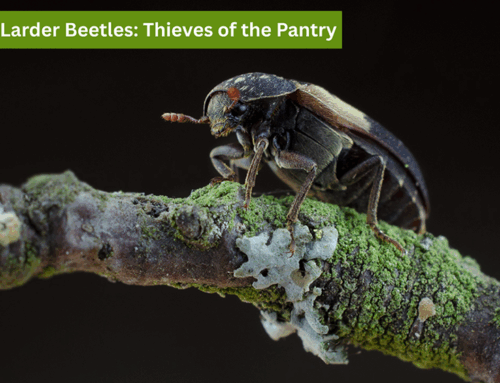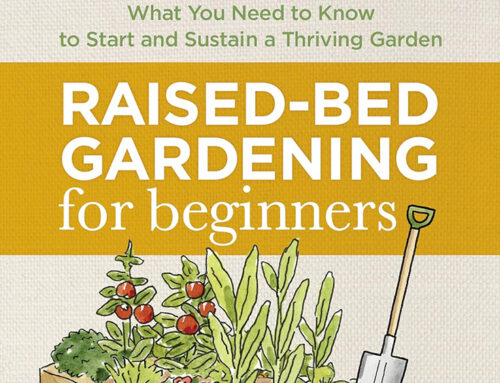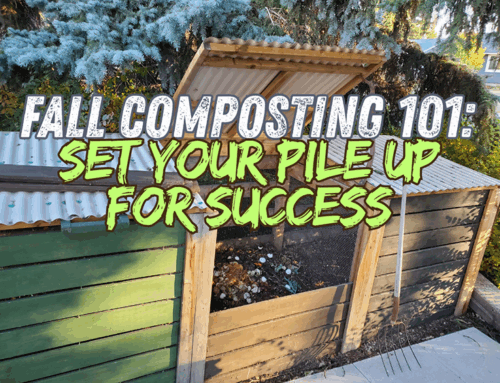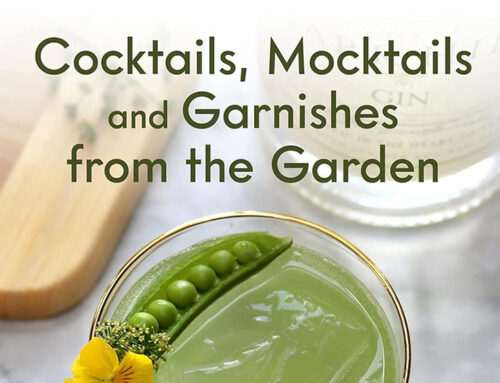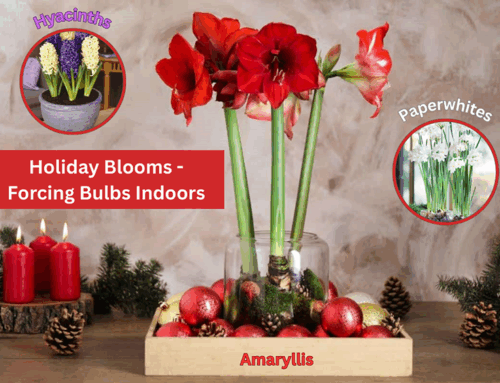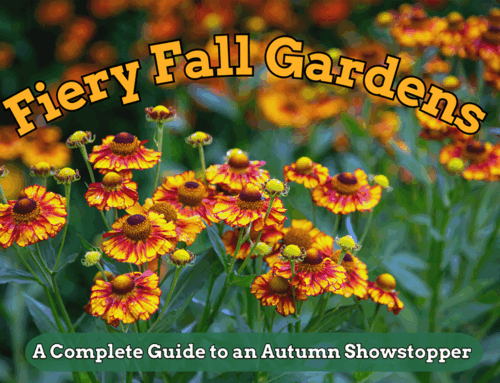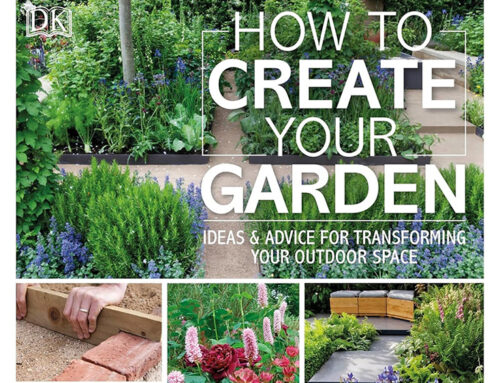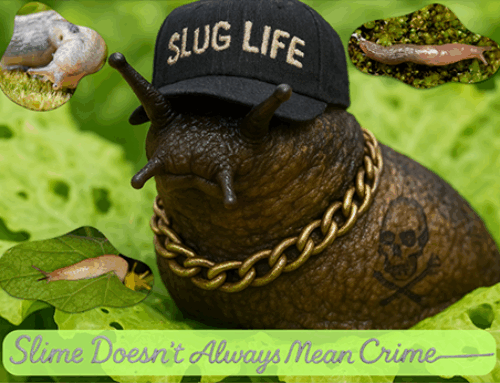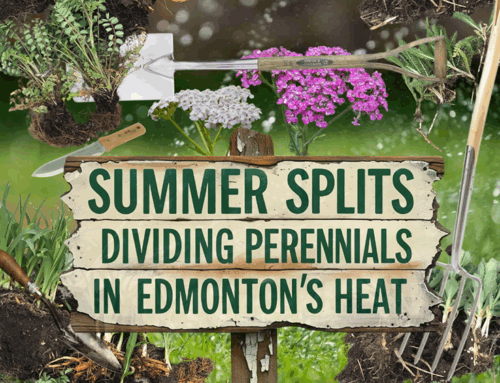Hedges for Edges: The Living Alternative to Fences
by Brett Kerley
Why is it that hedges get a bad rap from many homeowners? Is it because they’re unruly, hard to keep neat or too high maintenance? Or perhaps they cost too much to plant up and take too long to grow?
When my wife and I moved into our new home (a 1954 house), we thought, “Wow, we’ve got a yard that’s mostly boxed in with a newer fence. It’s going to be years before we need to replace it.” The house is on a corner lot, so we basically have two side yards rather than one yard off the back. The fence enclosed one side of the yard, and the other had mainly an overgrown hedge.
To Fence or Not to Fence
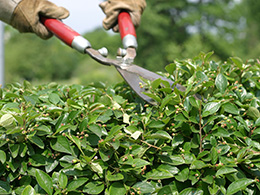 In some situations, it’s great to be fenced in. We have a beagle that likes to wander and at any opportunity will go through the hedge side to explore the neighbours’ gardens. On the fenced side, she gets bored very quickly and wants to come back inside, but she is safe from wandering off and from predators like coyotes.
In some situations, it’s great to be fenced in. We have a beagle that likes to wander and at any opportunity will go through the hedge side to explore the neighbours’ gardens. On the fenced side, she gets bored very quickly and wants to come back inside, but she is safe from wandering off and from predators like coyotes.
Over the last couple of years, it’s the wildlife that’s really astonished me. Not much happens on the fenced side, but everything is happening on the hedge side — from baby bunnies and coyotes walking through, to numerous birds using the trees, shrubs, and hedges, where they feel safe. Yeah, maybe the coyote thing was a bad point. I plan to remedy that by building some gates to deter those unwanted guests and to keep my dog in.
When we purchased the house it had cotoneaster hedges that were around 10 feet high with no undergrowth. I chopped them right down low so that they could start to regrow new shoots from close to the ground. My neighbour yelled and complained, “What are you doing? What about privacy?” I reassured her that it would come back stronger, thicker, and a lot healthier. This is year three now, and it’s already back up to 6-7 feet high with lush green growth from bottom to top. I plan to keep it around 6 feet going forward and a lot tidier.
The Benefits of a Hedge
So why do I prefer a hedge over a fence? It really comes down to personal preference. I don’t mind getting the hedge trimmer out once or twice a year to keep it looking neat. All those clippings go through my shredder and into the compost bin. I also love seeing the wildlife using the hedge as a home, or as a safe place to jump in and out of. These are some other benefits of having a hedge:
- Helps reduce local wind speeds.
- Reduces local traffic noise by absorbing and deflecting sound.
- Improves air quality by reducing dust and particles.
- Provides food and shelter for wildlife.
- Increases infiltration and storage of rainwater through their root systems.
- Assists in soil remediation and reduces soil erosion.
- Helps reduce local temperature extremes.
You just don’t get all these benefits with a fence. Of course, I understand in some cases fences can be the better option. In a tiny yard a hedge may encroach on your space, whereas a fence would give you more room or better containment for pets. However, if my fence got blown down or deteriorated beyond repair, I’d plant a hedge to replace it.
Choosing the Right Hedge for Edmonton
We need to think about the future, and not just right now. Are we going to get hotter, drier weather from now on? Are there plants that will take on these conditions? The answer is yes. In fact, I never water my hedge and yet it just keeps growing happily and looking lush.
So before choosing hedge, decide on what you really want:
- Evergreen or deciduous? (leaves stay year-round or drop every fall)
- Tall privacy or a short edging?
- Wildlife-friendly, low-maintenance, drought-tolerant?
Options for Year-Round Coverage
Wichita Blue Juniper (Juniperus scopulorum ‘Wichita Blue’)
- Zone: 3
- Height/Spread: Up to 12′ tall, 5′ wide
- Sun: Full sun
- Water: Low once established
- Features: Silvery-blue foliage, upright growth, drought tolerant. Excellent for xeriscaping and privacy.
Skybound Cedar (Thuja occidentalis ‘Skybound’)
- Zone: 2
- Height/Spread: Up to 12′ tall, 3′ wide
- Sun: Partial to full sun
- Water: Moderate
- Features: Narrow, dark green year-round foliage. More resistant to winter burn. Great for smaller yards.
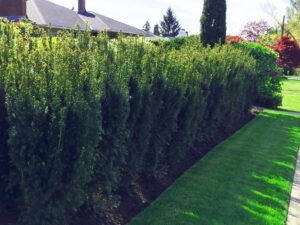 Hicks Yew (Taxus x media ‘Hicksii’)
Hicks Yew (Taxus x media ‘Hicksii’)
- Zone: 4 (borderline hardy in Edmonton, but I’ve had some for years)
- Height/Spread: Up to 18′ tall, 10′ wide (slow-growing)
- Sun: Full sun to full shade
- Water: Regular
- Features: Deep green needles, tolerant of pollution, great for shady spots. Needs protection from harsh winters.
Deciduous Options with Seasonal Interest
Peking Cotoneaster (Cotoneaster lucidus)
- Zone: 2
- Height/Spread: 8′ tall and wide
- Sun: Full sun to part shade
- Water: Low
- Features: Glossy green foliage, bright fall color, small pink-white flowers. Tough and resilient.
Alpine Currant (Ribes alpinum)
- Zone: 2
- Height/Spread: 5–6′ tall and wide
- Sun: Full sun to full shade
- Water: Moderate
- Features: Dense, green foliage, golden fall color, red berries in spring. Attracts birds and is drought-tolerant.
Ruby Carousel Barberry (Berberis thunbergii ‘Bailone’)
- Zone: 3
- Height/Spread: 4–5′ tall, 3–4′ wide
- Sun: Full sun to part shade
- Water: Low
- Features: Burgundy foliage, yellow spring flowers, red berries, and thorns. Great for security and visual impact.
Snowmound Spirea (Spiraea nipponica ‘Snowmound’)
- Zone: 3
- Height/Spread: 3–5′ tall and wide
- Sun: Full sun
- Water: Moderate
- Features: White spring blooms, arching branches, golden fall foliage. Attracts pollinators and is easy to maintain.
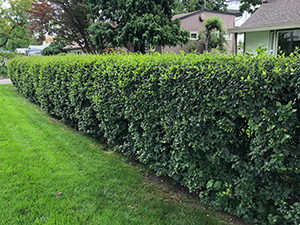
Cotoneaster
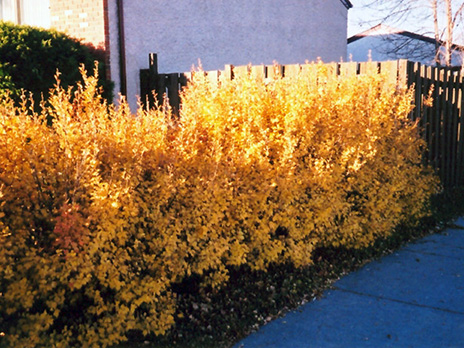
Alpine currant
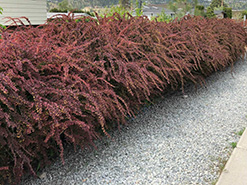
Barberry 'Ruby Carousel'
Final Thoughts
Choosing the right hedge depends on your goals. Want year-round privacy? Go evergreen. Need fast growth and wildlife value? Go deciduous. Have space constraints? Choose narrow forms like Skybound Cedar or Barberry. Prefer seasonal color? Try Spirea or Cotoneaster.
A thoughtfully chosen hedge brings texture, shelter, and life to your garden year after year — and as I’ve found, it’s often a more rewarding, sustainable, and beautiful choice than a plain old fence. Why not encourage nature into your garden with a hedge? It may take a little care, but it’s far more satisfying and affordable in the long run.
Don’t be on the fence — go for a hedge! Happy gardening everyone.


